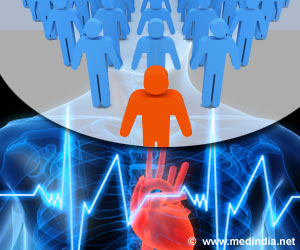Novel 3D bioprinting of the human heart may soon be possible using a new technology called Freeform Reversible Embedding of Suspended Hydrogels (FRESH), which can construct bio-scaffolds using collagen. This can be scaled up to build a full-sized, functional, adult human heart.
- 3D bioprinting of the human heart could soon become a reality using a new technology
- The technology is called Freeform Reversible Embedding of Suspended Hydrogels (FRESH)
- The FRESH technology can construct biological scaffolds using collagen
- The technology can be scaled up to build full-sized, functional, adult human hearts
Read More..
Study Team
The study was led by Dr. Adam W. Feinberg, who is the Arthur Hamerschlag Career Development Professor as well as Professor of Biomedical Engineering and Materials Science & Engineering at Carnegie Mellon University, Pittsburgh, Pennsylvania, USA. The co-first authors of the paper were Andrew Hudson and Andrew Lee, who are Ph.D. students in Feinberg’s lab. Other team members included Postdoctoral Fellow Dr. Dan Shiwarski; Ph.D. students Joshua Tashman, T.J. Hinton, Sai Yerneni, and Jacqueline Bliley; and Research Professor Phil Campbell.What’s Unique about the FRESH 3D Bioprinting Technology?
All organs are built-up on a biological scaffold, known as the extracellular matrix (ECM), which provides support and holds together all the cells and tissues of the organ. However, so far, it has not been possible to build this complex structure using conventional biofabrication techniques.The new FRESH technology has allowed the research team to circumvent the existing problems associated with conventional 3D printing of biological tissues and achieve significantly superior resolution and precision in 3D printing biological scaffolds using biomaterials such as collagen.
The uniqueness of the new FRESH technology is that it allows collagen to be deposited in layers using a gel that supports the increasing mass of collagen, as it is added layer-by-layer. Once the printing is complete, the supporting gel can be melted away by slightly raising the temperature. The temperature is adjusted so that the printed structure, consisting of collagen, is not damaged and remains intact.
“Collagen is an extremely desirable biomaterial to 3D print with because it makes up literally every single tissue in your body,” explains Hudson. “What makes it so hard to 3D print, however, is that it starts out as a fluid – so if you try to print this in the air it just forms a puddle on your build platform. So we’ve developed a technique that prevents it from deforming.”
What are the Advantages of the FRESH 3D Bioprinting Technology?
The main advantage of the new FRESH 3D bioprinting technology is that it is capable of creating collagen scaffolds as large as human organs. Another advantage is that other biomaterials, besides collagen, can be used for constructing the organs. Some of these biomaterials that can form soft gels – which make them suitable for bioprinting – include fibrin, hyaluronic acid, and alginate.Thus, the new FRESH technique provides a robust, scalable, and adaptable technology platform for tissue engineering. Importantly, the researchers have expanded the scope and accessibility of this novel technology by adopting an Open Source Model, so that literally anyone can build their own 3D printed organs.
“What we’ve shown is that we can print pieces of the heart out of cells and collagen into parts that truly function, like a heart valve or a small beating ventricle,” says Feinberg.“By using MRI data of a human heart, we were able to accurately reproduce patient-specific anatomical structures and 3D bioprint collagen and human heart cells.”
How will the FRESH 3D Bioprinting Technology Benefit Heart Patients?
Heart patients will be highly benefited by the new FRESH 3D bioprinting technology in the near future. The new technology holds immense promise for constructing a full-sized, functional, adult human heart. Considering the fact that there are over 4,000 heart patients on the waiting list for a heart transplant in the US alone and millions more worldwide, a 3D bioprinted, fully functional human heart will be a godsend for them.What are the Potential Applications of the FRESH 3D Bioprinting Technology?
The new FRESH bioprinting technology could have potential applications in many areas of Regenerative Medicine – from wound repair to organ bioengineering. The FRESH technology will be an important addition to the growing field of biofabrication.“Really what we’re talking about is the convergence of technologies,” says Feinberg. “Not just what my lab does in bioprinting, but also from other labs and small companies in the areas of stem cell science, machine learning, and computer simulation, as well as new 3D bioprinting hardware and software.”
Concluding Remarks
Feinberg concludes: “It is important to understand that there are many years of research yet to be done, but there should still be excitement that we’re making real progress towards engineering functional human tissues and organs, and this paper is one step along that path.”Reference:
- 3D Bioprinting of Collagen to Rebuild Components of the Human Heart - (https://science.sciencemag.org/content/365/6452/482)
Source-Medindia















